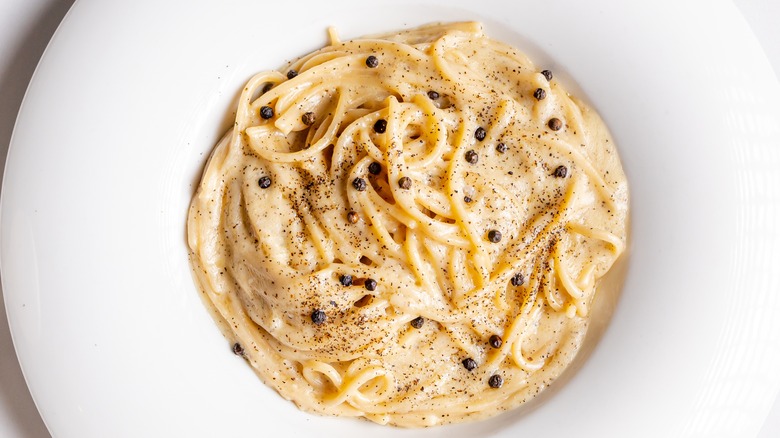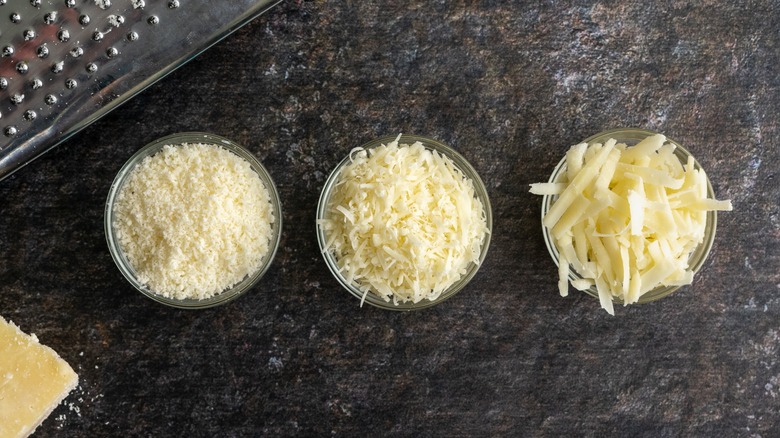The Absolute Best Way To Prepare Cheese For The Smoothest Pasta Sauce
Sometimes the comforting call of a creamy, cheesy pasta sauce is too tempting to resist. Yet, despite the fact that a helping of funky Parmigiano Reggiano or sharp cheddar can elevate richness and complexity, cheese can also be the very thing that ruins a sauce. Texturally speaking, it can be susceptible to splitting or clumping, which can lead to gritty and greasy results. Since it isn't always the simplest of ingredients to work with, knowing how to handle cheese can make all the difference when crafting a silky pasta sauce.
No matter the variety, cheese should never be added to a sauce in chunks or cubes. Larger pieces take longer to melt, which can keep the cheese from fully blending into the mixture. Additionally, this also heightens the risk of separating or curdling in sauces like a cheese-laden béchamel destined for mac and cheese. As a result, most cheeses benefit from being finely shredded or grated to allow for more quick and seamless whisking into sauces.
As for the dos and don'ts of prepping cheese in this way, remember that the finer it's grated, the better. This is true especially of harder varieties like pecorino Romano, manchego, or comté that lack moisture which prevents them from easily melting. Consequently, grating cheeses as finely as possible can coax even the most stubborn of cheeses to successfully blend and emulsify into a sauce. However, there's more to executing a super smooth pasta sauce than just properly processing the cheese.
A velvety sauce doesn't stop at finely grating cheese
Prior to breaking out your pots and pans, think carefully about the ingredients. A smooth sauce can be accomplished with soft and creamy cheeses like chèvre, gorgonzola, or mascarpone. But, for more depth, a mixture of soft and firm cheeses or strictly hard cheeses is wise. Evidently, this is where the necessity of finely grated fromage comes in.
Essentially, feathery wisps of cheese are best achieved with the right tools. A Microplane is the best choice as it produces heaps of grated cheese with minimal effort thanks to its tiny, closely-spaced teeth. A box grater can do the trick, but the smallest holes can sometimes cause the cheese to clump, so use the side that provides the airiest results. But, a glossy and decadent sauce isn't a guarantee unless the right technique is also used to incorporate the cheese.
A major threat to sauce is adding cheese at the wrong time — always add it last. That said, be mindful of extremes in temperature as this can trigger splitting. For cacio e pepe, the solution may be to temper cheese with some pasta water to avoid unpleasant textural changes. When making Alfredo sauce, it might be as straightforward as removing the pan from the burner before gradually adding cheese. In any case, constant whisking will also help lead to a more luscious outcome. Although it might take some practice, a perfectly smooth cheesy pasta sauce is worth the extra effort.

